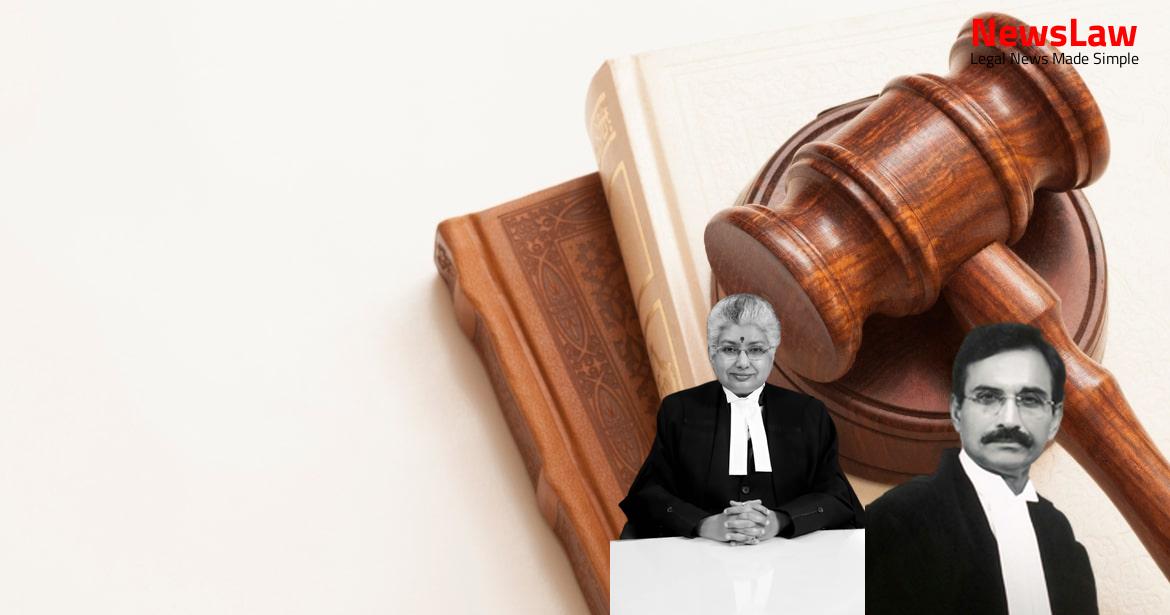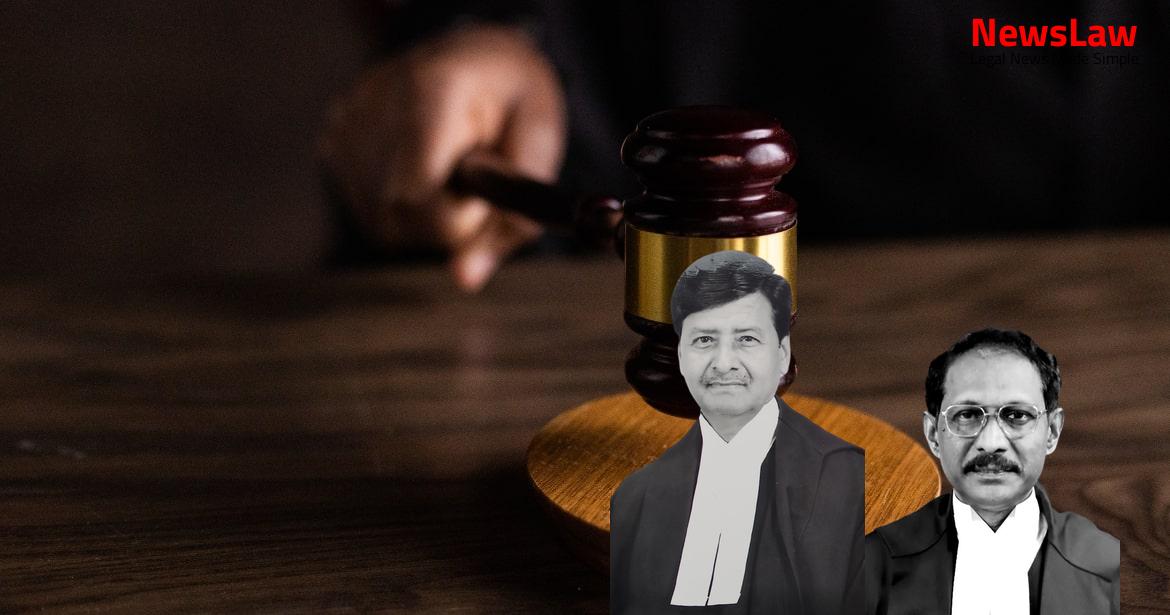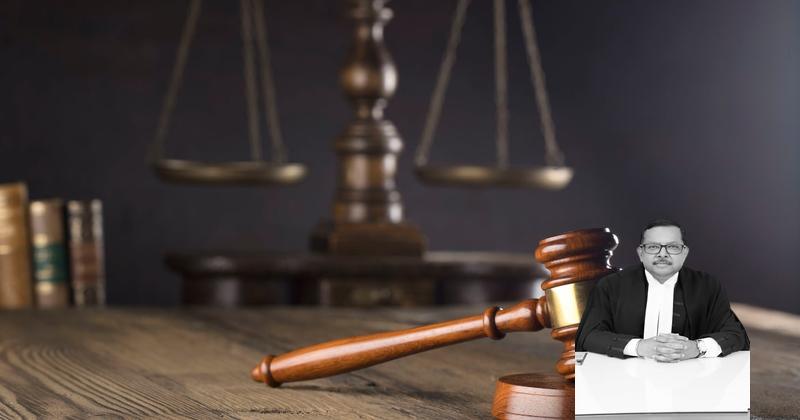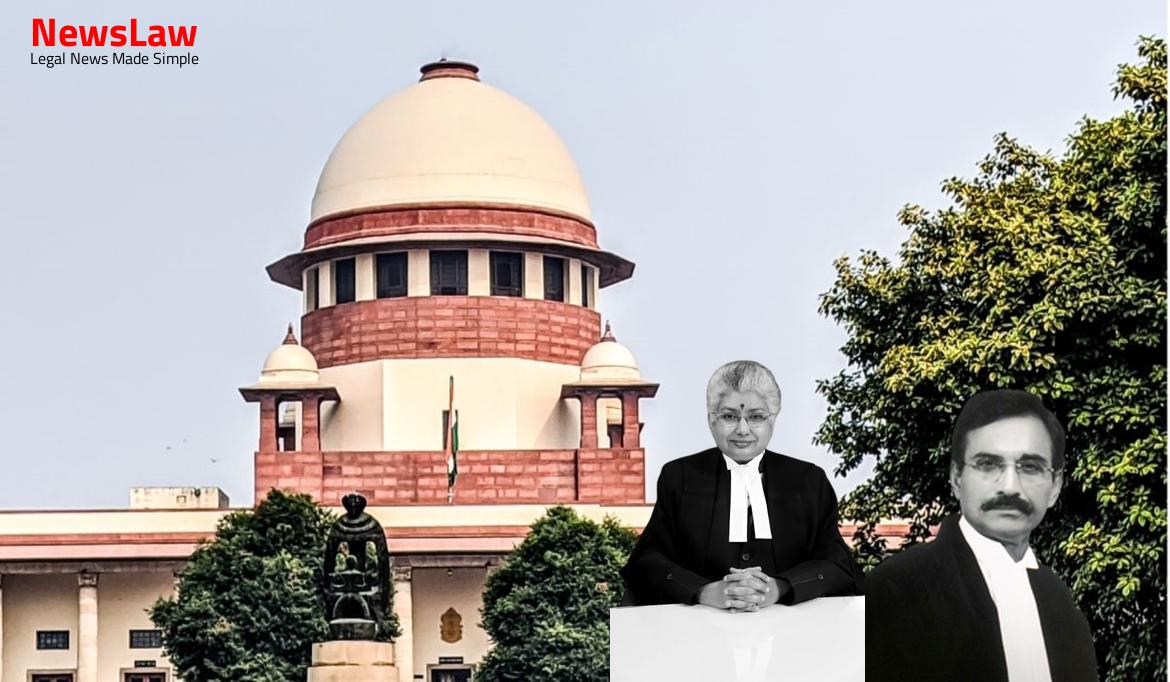Explore a detailed look at the court’s legal analysis in a significant case that scrutinizes the principles and reasoning behind the judgment. The emphasis is on dissecting the legal intricacies that played a pivotal role in shaping the outcome. This case sets a precedent for future legal proceedings and highlights the importance of a rigorous legal analysis by the courts.
Facts
- Brijlal Yadav attended a function with his family where his daughter went missing
- The victim girl was found with visible injuries and blood spots on her thighs and genitalia
- Multiple witnesses testified regarding the presence of the accused at the scene of the crime and their behavior afterwards
- The post-mortem report revealed various injuries and signs of struggle on the victim’s body
- Seizure of clothes and other objects from the crime scene was conducted
- The Appellant and Satish were arrested based on suspicion and evidence gathered
- The Appellant and Satish were convicted and sentenced to death for offences including rape and murder
- Amicus curiae appointed by the Court did not have sufficient time for cross-examining witnesses
- Appellant was not given the opportunity to submit relevant material before sentencing
- Mitigating circumstances were not taken into consideration during sentencing
- The Trial Court and the High Court upheld the conviction and death sentence imposed on the Appellant and Satish
Also Read: Reversal of High Court’s Decision on Auction Sale Confirmation
Arguments
- The Appellant’s clothes were seized from the cowshed in his house.
- DNA report from FSL, Sagar was relied upon.
- A black button from the shirt of Satish was found at the spot of the offense with no connection to the Appellant.
- Serological testing was not done to prove the blood on the Appellant’s clothes was human blood.
- The Appellant’s statements under Section 313 CrPC were not properly appreciated.
- The chain of circumstances was argued to be incomplete and inconsistent with only one hypothesis.
- The admissions in the Section 313 CrPC statement were noted as not substantive evidence.
- The ‘injury marks’ on the arrest memo were blank.
- Error was claimed in relying on the disclosure statement of the Appellant.
- The Appellant’s injuries were attributed to him being a laborer doing physical work.
- The prosecution proved a chain of events/circumstances connecting the Appellant and Satish to the crime.
- Evidence showed the victim attending a function and later visiting the house of Satish, corroborated by witnesses.
- Medical evidence confirmed brutal rape and murder, with scientific evidence pointing to Satish committing the rape.
- The State argued multiple peaks observed on DNA evidence linking the accused to the crime.
- The Appellant could not prove his alibi and the State contended the Trial Court’s imposition of the death sentence was justified.
- The Court cited principles from Dalbir Kaur v. State of Punjab on interference in criminal appeals.
- Undisputed facts included the victim going missing after a ceremony and being found dead the next day.
- Appellant and Satish were arrested, with recoveries made based on their statements.
- The prosecution used the statements under Section 313 CrPC as evidence supporting their case.
- The State argued for no lenience due to the heinous nature of the crime and highlighted the Appellant’s failure to examine crucial witnesses.
- Referring to Appellant’s 313 CrPC answers, the State relied on established legal principles regarding denials in such statements.
- Satish was apprehended later, appearing disheveled and requesting liquor.
Also Read: Interest Compensation Dispute in Property Demolition Case
Analysis
- The Appellant has no criminal antecedents before the commission of the crime.
- There is nothing adverse reported against his conduct in jail.
- The death sentence has been commuted to life imprisonment for a period of 30 years with no chance of remission.
- FSL reports show evidence linking the Appellant and his accomplice, Satish, to the crime scene and the victim.
- Medical evidence confirms the rape and murder of the victim.
- The Appellant and Satish were found in a drunken state during crucial times surrounding the crime.
- Injuries were found on the bodies of the Appellant and Satish, indicating their involvement in the crime.
- The Appellant and Satish visited various places after the commission of the offenses, creating suspicions.
- The Trial Court process was criticized for not providing a fair trial and rushing the judgment.
- Accused are entitled to a fair trial, including separate proceedings for conviction and sentencing.
- The need for an effective opportunity for the accused to contest the death sentence.
- Failure of the Appellant to prove an alibi through DNA profiling and evidence analysis.
- The probability of the accused being reformed and rehabilitated is considered as a mitigating circumstance.
- The State must procure evidence to establish that there is no possibility of reformation and rehabilitation of the accused before imposing a death sentence.
- Death sentence should only be imposed in the rarest of rare cases where the option of a lesser punishment is unquestionably foreclosed.
- The Courts must seriously consider the probability of a convict being reformed and rehabilitated in society before awarding a death sentence.
- The prosecution has the obligation to prove to the Court, through evidence, that the convict cannot be reformed or rehabilitated.
- Consideration of the reformation, rehabilitation, and reintegration of the convict into society is essential.
- The sentencing process should also focus on the criminal, his state of mind, socio-economic background, etc., not just the nature of the crime.
- Awarding death sentence is an exception, and life imprisonment is the rule.
Also Read: Legal Interpretation of Extension of Judicial Member’s Term
Decision
- The conviction of the Appellant under Sections 363, 366A, 364, 346, 376D, 376A, 302, 201 of IPC and Section 5(g) (m) read with Section 6 of The Protection of Children from Sexual Offences Act, 2012 is upheld.
- The sentence is converted from death to imprisonment for life for a period of 30 years without remission.
- Mr. K.G. Sahu, Advocate appointed through Legal Aid represented the Appellant before the Sessions Court on 04.07.2017.
Case Title: BHAGWANI Vs. THE STATE OF MADHYA PRADESH (2022 INSC 52)
Case Number: Crl.A. No.-000101-000102 / 2022



